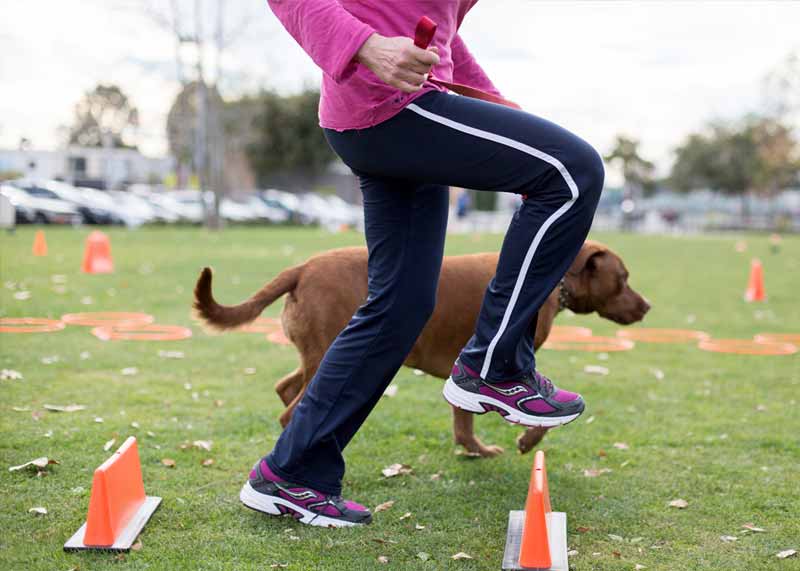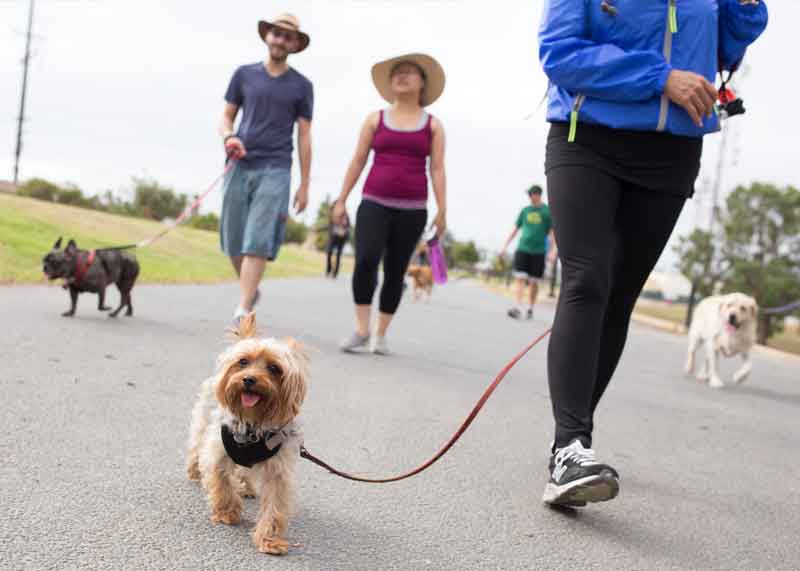Canine & Human Fitness Together In One Class!
Exercise With Your Dog Tips
Exercise With Your Dog Tips
As more and more people are looking for ways to integrate their dogs into their everyday routine, there are an increasing number of opportunities to include them in our fitness activities, like dog-friendly racing events, surfing competitions, and integrated yoga and strength training classes.
Exercising with your dog is a trend gaining momentum.
It’s not surprising because working out with your best buddy is amazing! It keeps you both active and creates lifelong memories. I say this from experience having completed several 10k races with my dog, Berlin, as well as regularly strength training together.
As a canine and human fitness trainer who teaches workout with your dog classes so others can enjoy exercising with their dogs, and clearly loves being active with her own dog,
I feel fortunate to have been interviewed by Reebok for an article on this very topic.
Not only does the article share some great activity options, but it also features insights from many dog and fitness professionals who combine dog and human fitness, including yours truly.
Understandably, not all my tips for exercising with your dog could be included so before sharing the article with you, here is my complete interview with Reebok Contributor, Amy Reiter (AR):
AR: What are some of the benefits of integrating your dog into your workout (for the humans; and also for the dogs)?
F&P: A major benefit of integrating your dog into your workout routine is motivation.
As long as your dog (and you!) are healthy and able to perform the exercises pain-free and with good form, you have a wonderful workout buddy. Plus it’s a lot of fun focusing on your fitness together.
Incorporating regular physical activity into your routine also means you are increasing the likelihood you will have more healthy years to share. What’s not to love about that?
AR: What thoughts would you like to share about activities with dogs like running, hiking, biking, swimming (or other water activities), boot camp/strength training, and Skijoring?
F&P: If I had to pick one activity for people to do with their dog, it would be strength training. It can help improve the quality of naturally repetitious everyday tasks like sitting down and climbing stairs, as well as their performance while walking, hiking, running, or any number of other activities.
Strength training can also help both human and dog build balance and proprioception skills, as well as the dog’s hind-end awareness, which they don’t naturally possess.
AR: What are some of the best exercises to do with a dog, and what makes them especially good to do with a dog?
F&P: That entirely depends on the dog, the human, and their individual needs, abilities, motivations, and goals.
No matter what, there should be a planned progression for any new activity (gradually adding reps and/or duration, etc), whether it’s new for the human or dog or both.
Each activity should also begin with a warm-up and finish with a cool-down. A warm-up includes dynamic movements for both, like toe touches for the human, or for integration, inviting the dog to touch their human’s hand as they reach toward their toes. A cool-down involves static stretching that includes manually guiding or luring the dog into their stretch. A great hip and quad stretch for both human and dog is a low lunge for the human with their dog’s front feet on their human’s front quad.
Of course, depending on the dog’s size, integration might not always work, at least not well, and may need to be modified or done separately.
For me, I end every activity with a doggie massage. It’s just such a great conclusion to a wonderfully bonding experience.
AR: What do you usually do in your dog/human workout classes?
F&P: During these classes, I divide the time between dog, human, and combined exercises. This is in large part because some exercises lend well integration and others do not, especially given the different sizes of the dogs and the varying abilities of the humans and dogs.
A golden retriever would have to crawl under their human’s leg while in a lunge, but a Corgi easily walks.
That same Corgi would have to jump over their human’s leg(s) in a V-situp, but a Golden Retriever could most likely step/stride. That’s not to say both of these dogs can’t do these exercises with their human, but they aren’t getting the same outcome. So, the questions are: what are the human and dog’s abilities, needs, and goals, do these exercises serve them, and can they be done well (if integrated) by the human and dog?
In terms of types of activities, some are cardio-based, but
Most exercises in Workout With Your Dog class largely focus on strength, endurance, and flexibility training.
For dogs, this often involves basic behaviors like sit, down, and stand (which I consider the equivalent of our squat, pushup, and plank) but with an emphasis on form. If a dog doesn’t know these behaviors (well), they get better, in both understanding and form, from even just a few classes with a trained fitness instructor/dog trainer providing tips.
AR: Is integrating dogs into fitness routines something you perceive as a growing trend? And if so, how have you seen the trend develop? And do you think it’s having a moment — maybe thanks to all those pandemic puppies and the benefits of getting outdoors, etc?
F&P: Working out with your dog, and canine fitness overall, is a growing trend, and that has its advantages and disadvantages.
It’s great people are becoming more interested in their dog’s health and wellness (and their own) and are choosing to work out together, especially since over half of the dogs in the United States are overweight or obese.
Due to the growing popularity, since I started offering workout classes for people and their dogs in 2015, it has also become easier to find continuing education options as a canine fitness trainer as well as more opportunities for those looking to participate in integrated activities with their dog.
Unfortunately, there are some people jumping on the bandwagon in a way that makes canine fitness and working out together seem like a gimmick.
Yes, it is a novelty, but it is not, or should not be a joke and the dog (and human)’s health and well-being should not be overlooked.
Ultimately, I hope the trend of exercising with your dog continues to gain momentum and become a mainstay, far beyond the pandemic.
AR: What kind of advice do you have for people who want to integrate dogs into their fitness routines, in general? (And is there anything you would warn them about?)
F&P: First, make sure your dog is healthy to participate by taking them to your vet. Find out of they have any contraindications to an activity or even a particular exercise.
Even if you are given clearance to exercise with your dog, you always need to be your dog’s advocate. Listen to what they are saying to you.
Since they can’t do this with words, watch for signs of discomfort, pain, or fatigue (panting, shifting weight, poor form, refusal to perform, hopping instead of walking, etc). Of course, you should never sacrifice you or your dog’s health or safety to work out, whether individually or together.
Some days I do my workout while my dog waits on her bed, and then I guide her through her workout. When we do work out together, I always inspect any equipment before use and don’t use heavy equipment, like weights, that could fall and hurt either one of us. Instead, I largely utilize bodyweight exercises, adding more reps, duration, or the next degree of difficulty (like an unstable and/or elevated surface) when appropriate. That being said,
Your dog should never be used as your weight, or what I see a lot of, as a mere accessory to an exercise.
My last bit of advice would be, if you’re looking to work out with your dog, make sure it’s an activity that you both enjoy. Not all dogs (or humans) love to run, swim, or hike, but may love other activities like freestyle (dog dancing), agility, or rally (dog sport based on obedience).
AR: I assume you personally have a dog (What kind? What is his/her name?): What’s your favorite fitness-related thing to do with your dog?
F&P: Yes, I have a dog and she is absolutely amazing. Her name is Berlin and she’s a 14-year-old Shepard mix. I adopted her when she was 2 years old from the shelter where I was volunteering at the time.
In her younger years, Berlin would help me train for half and full marathons by running with me 3-6 miles once or twice a week.
We also completed several dog-friendly 5 and 10k races together including several events that benefited animal rescue organizations. Now as a senior, her pace and endurance have changed, but she still enjoys jogging together 1-2 miles every 2 weeks or so. I can tell she’s ready for another jog because she’ll speed-walk the entirety of our regular daily walks. Just like in her youth, if we head out and she wants to stop and sniff or slow to a walk,
I follow my dog’s lead.
AR: What’s the bottom line: What would you most like people to know about dogs and exercise?
F&P: Being active is so beneficial for humans, not just physically but mentally, and the same goes for our dogs. They want and need stimulation. They enjoy learning (and earning their food and some treats..just not to many otherwise we’re defeating the point).
Dogs thrive when they have a purpose.
You can teach an old dog new “tricks” and improve known behaviors. You can make working out with your dog fun and safe.
You can help increase the number of healthy years you have together with exercise.
Thank you for reading my interview with Reebok. It is always such an honor to be included in any piece about dogs and fitness.
Before inviting you to read their article in its entirety, I’d like to share how you can exercise with your dog with Feet & Paws, as well as one more tip:
Puppies are still growing, and depending on their breed(s), their growth plates might take 2 years to close.
This means their activities should be kept short and non-repetitive. So, avoid too much jumping, landing (like out of your car), and running. Not sure if your dog’s growth plates have closed? Talk to your veterinarian.
Interested In Canine Fitness Training For Your Dog?
I’d love to help. Reach out to schedule your complimentary phone consultation so I can learn a bit more about you, your dog, and your training goals.
Exercise With Your Dog With Feet & Paws
Workout With Your Dog Classes
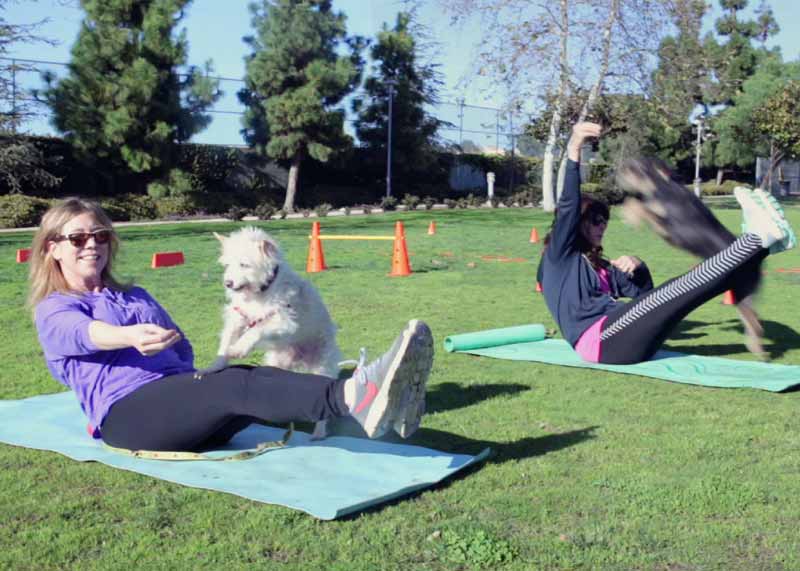
Other Dog & Fitness Training Opportunities
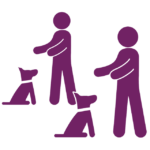
Dog & Puppy Training Classes
The Basics & Beyond
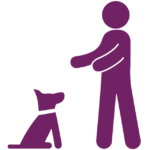
Private Dog & Puppy Training

Private Canine Fitness Training

Canine Only Fitness Training
This Class Is Going To The Dogs!

